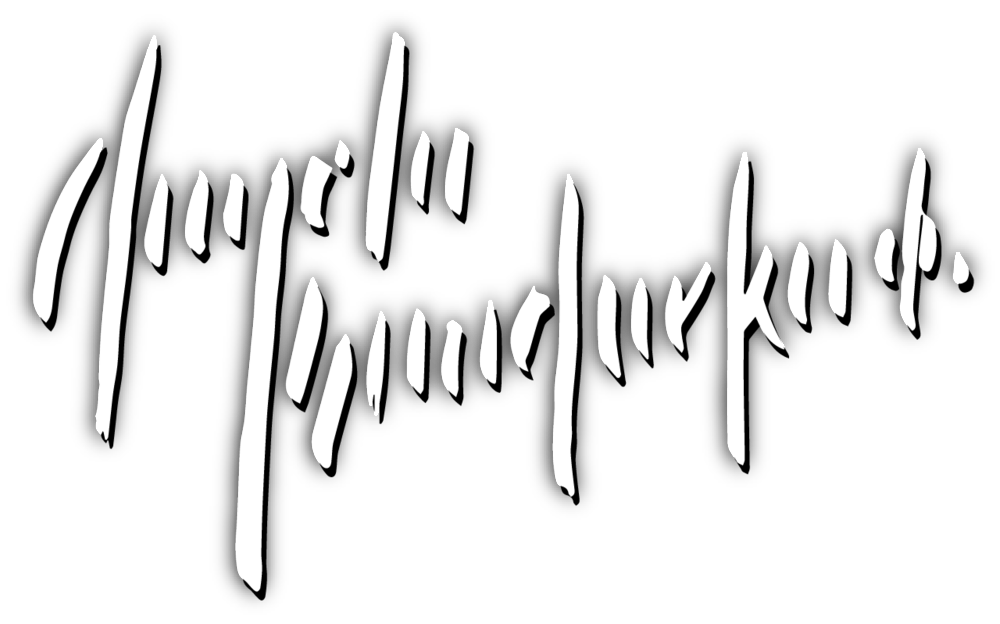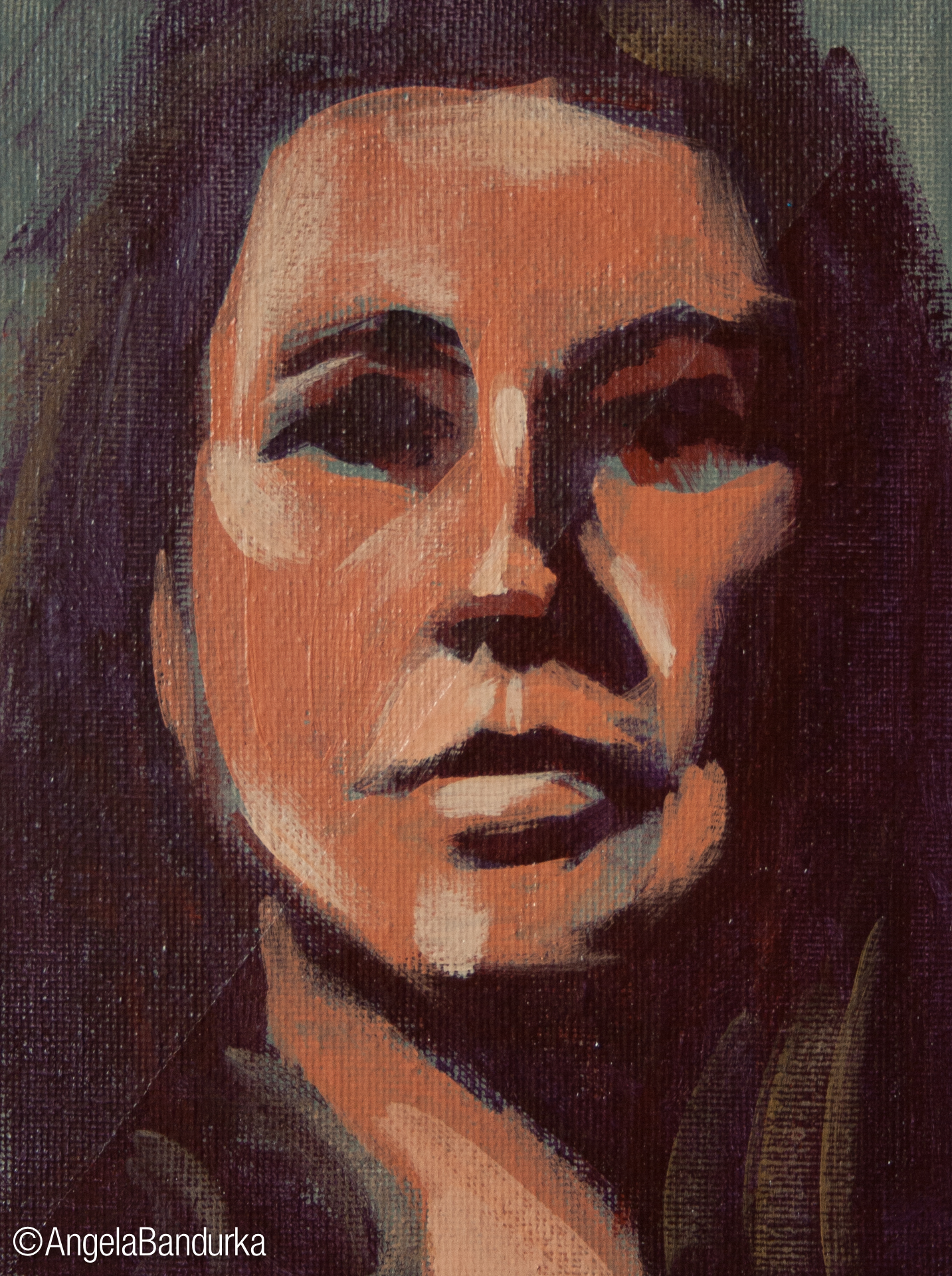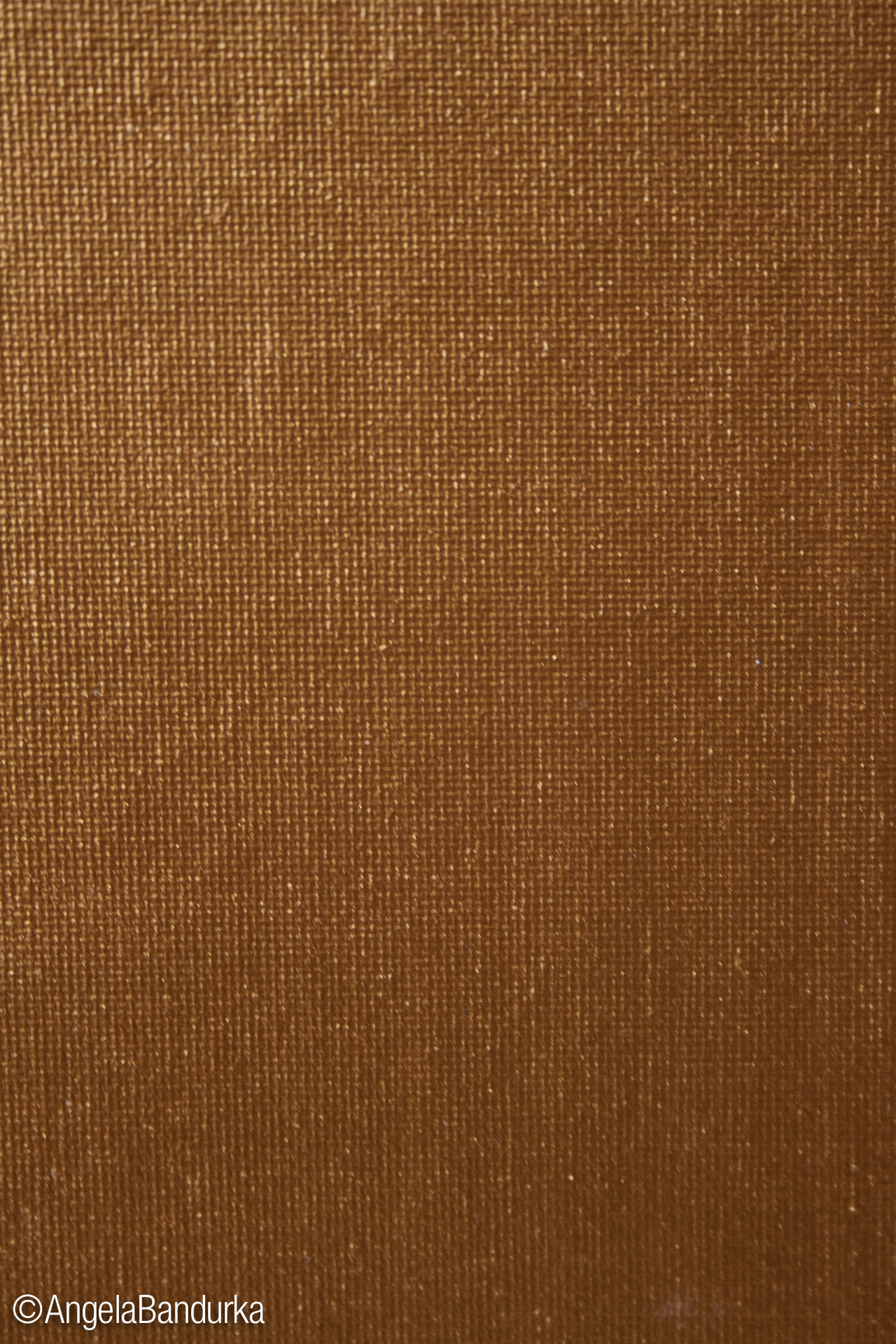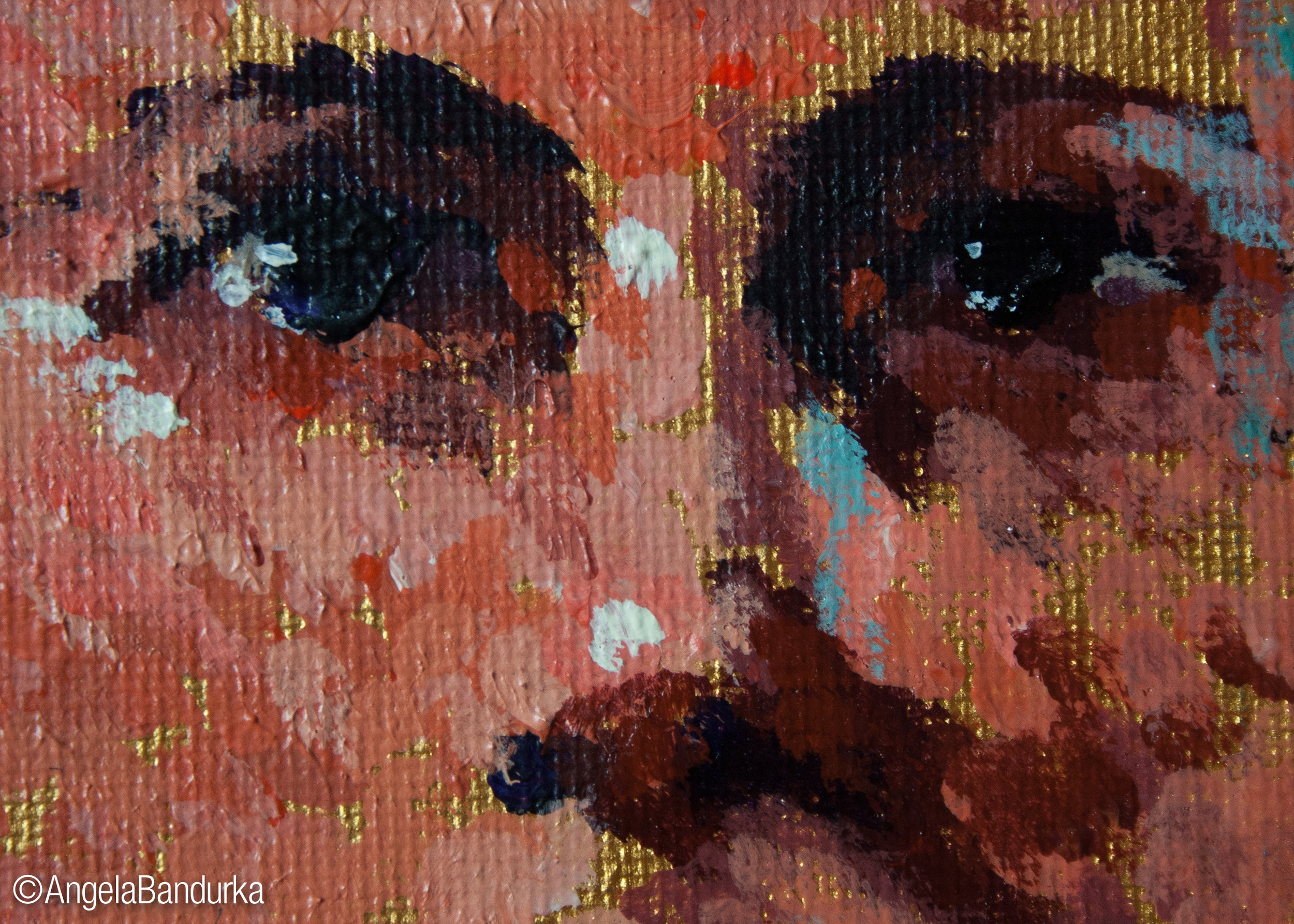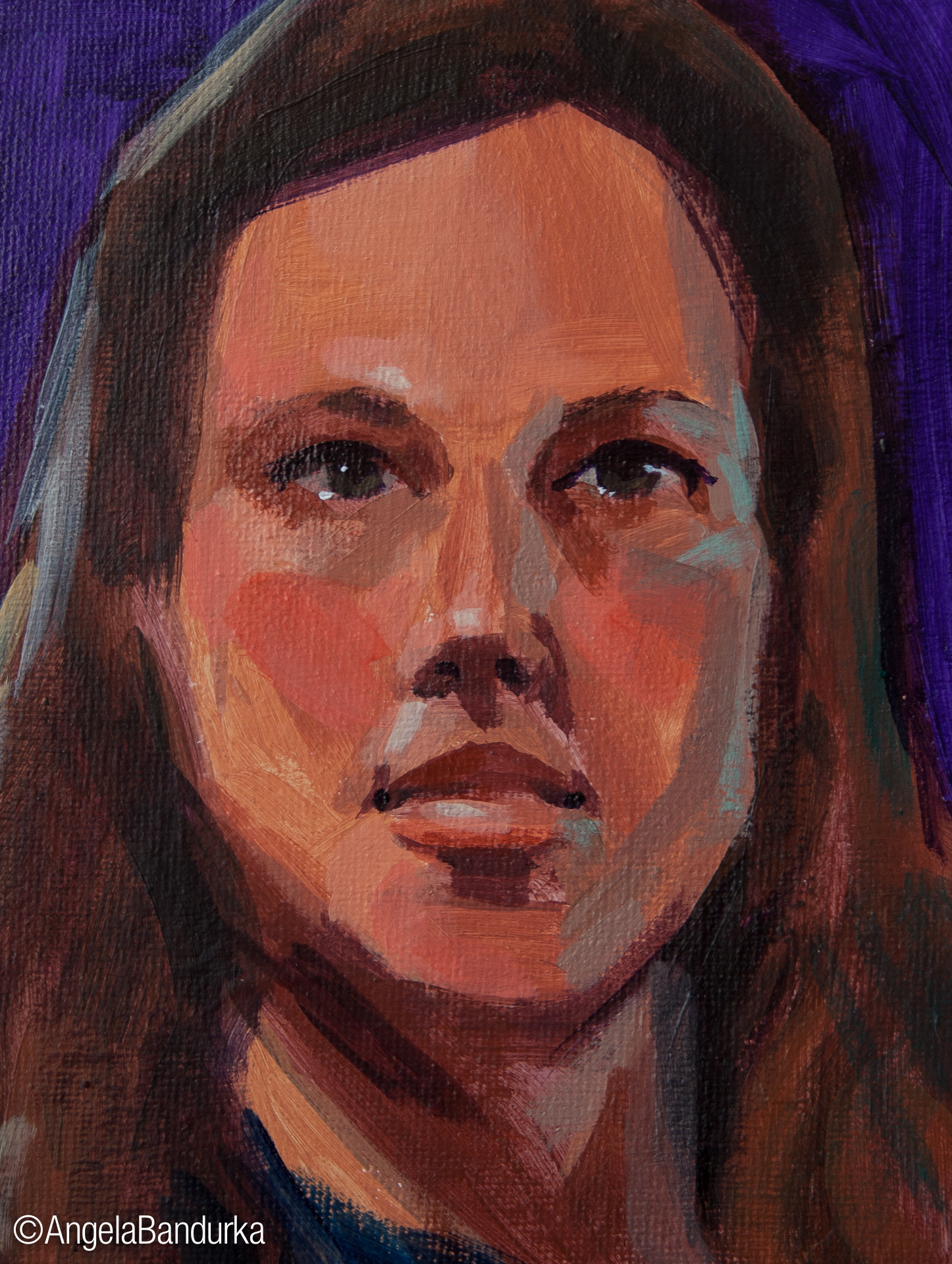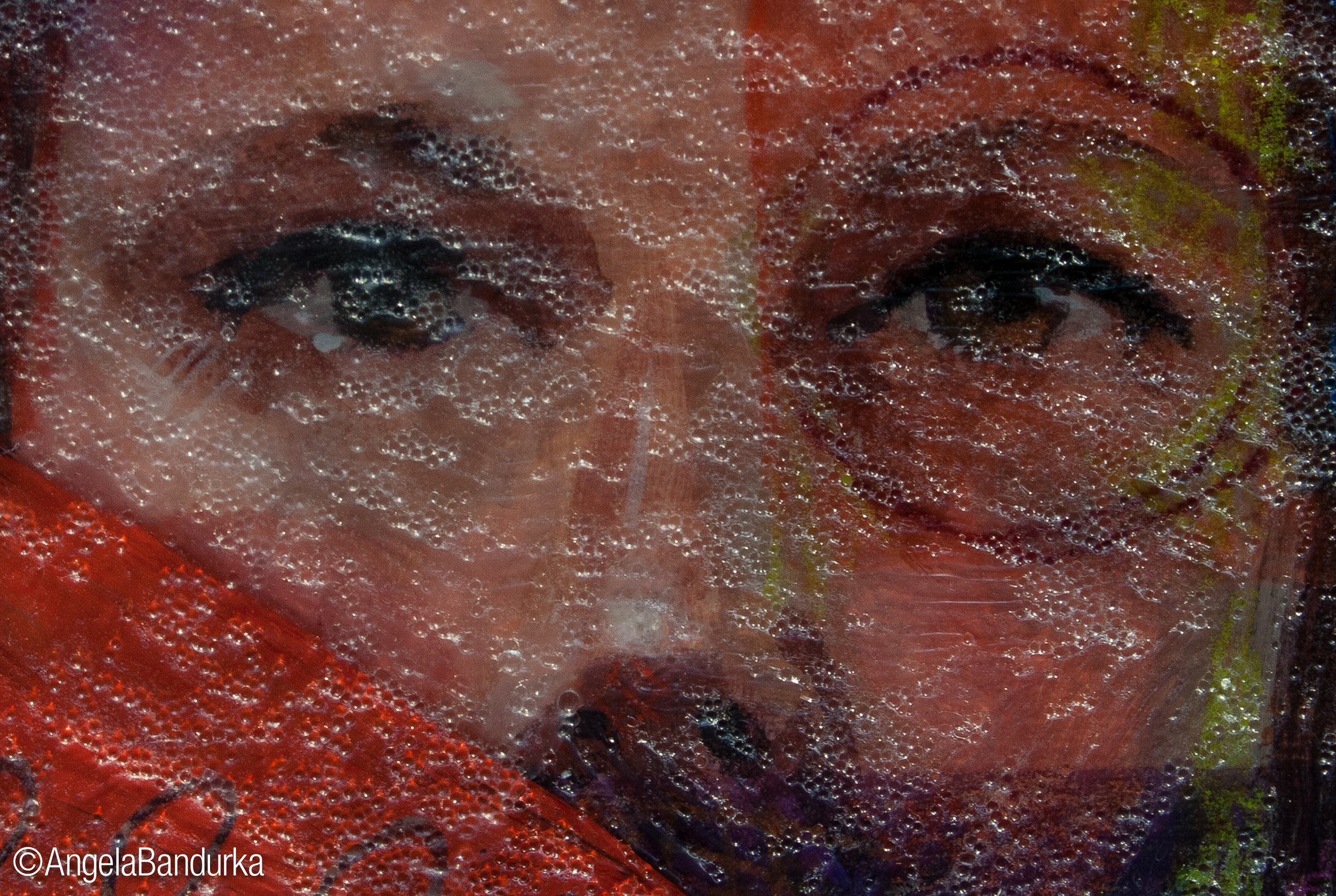There are many different ways to add texture to your work. You can add it with your support choice, as a process on the base layer, throughout the process, or during the final steps.
Palette knife artists use very thick layers of paint, which creates texture on its own. The work of Van Gogh included visual and tactile textures through the use of brush strokes and very thick paint. Other artists like a very smooth, even texture. It all plays in to your style and enjoyment of the painting process. Whatever support of style you choose, I recommend you apply gesso to your support (even if it's pre-gessoed by the manufacturer), and in some cases you may need to seal the support (like when you paint on a piece of driftwood from the beach - I use Golden Acrylics' medium: GAC 100).
Below are a few examples of how you can create texture before, and during the process. At the end of these samples, you'll see how you can add some texture to the final stage.
Click on any image to see it up close!
SAMPLE A
TACTILE: Hard, slightly absorbent - Canvas panel, thin coat of white gesso, thin coat of high flow acrylics in neutral grey 6
VISUAL: Acrylic paint in limited palette, painted with a filbert brush
SAMPLE B
TACTILE: Soft, absorbent - Canvas panel, thick coat of white gesso applied with a soft brush; lastly an layer of clear gesso mixed with liquid acrylic in napthol red medium (3:2)
VISUAL: Acrylic paint applied with filbert and round brushes, final coats dry brushed on
SAMPLE C
TACTILE: Soft and very absorbent - Oil paper, no gesso used
VISUAL: Acrylic paint thinned with Airbrush Medium to work it wet into wet onto the paper
SAMPLE D
TACTILE: Hard, slippery - Canvas panel, thin coat of gold gesso
VISUAL: Acrylic paint applied with a small filbert brush in a pointillism style, allowing the gold to show through
SAMPLE E
TACTILE: Soft and matte - Canvas panel, thick coat of light molding paste, applied with a large flat palette knife, then coated with a thin layer of white gesso
VISUAL: Acrylic paint applied with a small filbert and round brushes
SAMPLE F
TACTILE: Hard and very slippery - Canvas panel, thin coat of soft gel medium, applied with a flat palette knife
VISUAL: Acrylic paint applied with bright (flat) brushes
SAMPLE G
TACTILE: Hard and slightly absorbent - Canvas panel, coat of white gesso
VISUAL: Acrylic paint applied with a large round brush with thick paint
SAMPLE H
TACTILE: Canvas panel, thin coat of white gesso
VISUAL: Multiple layers of paint and medium
- acrylic paint applied as a representational painting
- layer of GAC 800 (medium that applied in thick layers without "crazing" - or creating rivers and valleys as it dries) poured on and spread with a soft brush, sprayed with rubbing alcohol to remove bubbles; allowed to dry
- layer of Acrylic Ground for Pastels, allowed to dry
- colored pencil
- layer of GAC 800
- layer of Acrylic Ground for Pastels
- colored pencil
- Red paint applied, the carved into with brush handle (sgraffito)
- layer of Glass Beads Gel
Final Step
At the very end, you can choose to finish your painting with a gloss or matte finish (or something in between, or a bit of both, if you prefer.) As you can see here, all the paintings were finished with the top left corner in matte varnish and the bottom right corner in a gloss varnish. As you can see, the gloss deepens the colors and their values, and brings out the texture more. If your texture is smooth all the way through, you can achieve a very glossy finish, the softest and most absorbent textures will diffuse some of the shine.
Experiment with it and make it your own!
